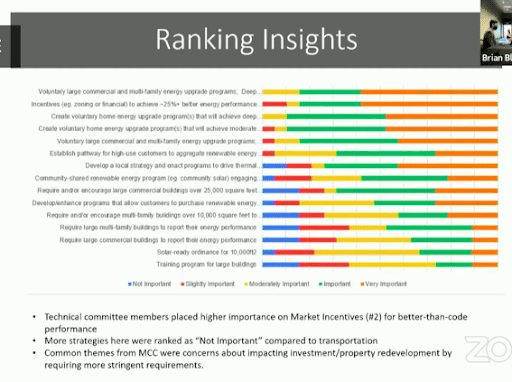This blog post was written by Brady Watson, former Civic Engagement Coordinator for the Southern Alliance for Clean Energy.
Knoxville Mayor Indya Kincannon is convening a newly-formed city Climate Council in a series of meetings to help create a plan for meeting carbon reduction goals adopted by City Council. The Council first met in May 2020, and will continue meeting through this fall and winter. You can find an overview of the Council in the blog post here and webinar recording here. To learn more about the Mayor’s climate council and see the schedule of meetings, visit the City of Knoxville’s website. Below, we share updates from the Climate Council meetings on August 11.
Transportation Working Group Meeting on Aug. 11, 2020
The Knoxville Climate Council Transportation working group met on Tuesday, August 11th to further discuss transportation-related issues in Knoxville. You can watch the recording of the meeting and read a recap of the last meeting here.
The meeting centered around reviewing results from a survey that Climate Council members had taken to gather input on the most effective mitigation strategies the city could employ to mitigate climate pollution.
The City’s Sustainability Director, Brain Blackmon, led the conversation and discussed the results of the survey. Blackmon said that among the different strategies presented in the survey, there exists a range of costs, timelines for implementation, and goals of implementation that must be considered. He also stressed that these initial survey results are by no means the final rankings of potential strategies, and that they were mainly used to develop a better understanding of local priorities, identify working group members, and develop feedback on possible blind spots in strategies.
Next, Brian moved to a discussion of how climate council members rated high-impact practices, or HIP, in the survey. You can see a ranking of how members prioritized potential HIPs that could be implemented in the city climate action plan. It became clear that there was a consensus for the top two strategies: expanding bicycle and pedestrian infrastructure, and making investments in public transit. Increasing adoption of electric vehicles (EVs) and EV charging infrastructure also both ranked high on the list.

Next, Brian moved the discussion to further evaluating the HIPs with specific metrics. A facilitated discussion was led to generate consensus around defining range and scale to measure HIPS based on:
- Mitigation impacts
- Costs
- Implementation readiness
An example of a scale is shown in the image below. In this case, Brian suggested breaking out strategies by sector, greenhouse gas (GHG) reduction, and investment. Within GHG reduction, there are breakdowns for low potential, moderate potential, and major potential, with the definition of each being up to the group to determine. Similarly, with investments, there are low, moderate, and high cost investments that can be measured based on the Climate Council’s definitions.

Once again, Brian showed the slide with the strategies ranked as a baseline. That image is seen below with highly ranked strategies in green, a middle range in yellow, and low ranking strategies in orange.

SACE Electric Transportation Policy Director Stan Cross made the point that the EV space is changing rapidly, and costs are coming down: “How we think about strategies overtime will be an important part of the conversation going forward.” He also stressed the need to be flexible as the group evaluates strategies over time. Erin Gill with the City agreed. Erin Rose also chimed in saying that the Climate Council Equity Committee was working with Blackmon and Gill to merge the previously mentioned evaluation metrics with equity metrics, such as health, access, and affordability, as well.
#KnoxvilleClimateCouncil